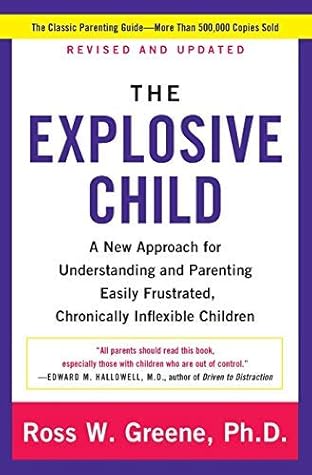More on this book
Community
Kindle Notes & Highlights
There are also many adults who use Plan A because they fear that their concerns won’t be heard or addressed if they use any other approach. When did they come to fear that their concerns wouldn’t be heard or addressed? Probably during childhood, when their Plan A parents were neither hearing nor addressing their concerns. These adults need to be reassured that their concerns will be heard and addressed using Plan B as well.
QUESTION: I’ve been taught that it’s important for parents to be consistent with each other in front of the child so the child can’t do any “splitting.” So, what advice do you give parents if one is using Plan A on an issue and the other disagrees? ANSWER: That’s worth thinking about a little. Consistency is a bit overrated. I’ve come across no co-parents who were perfectly consistent with each other. And, by and large, their offspring were well-behaved!
Then they need to agree on how to go about solving those problems. Problems that are solved with Plan A generally aren’t durably solved. It doesn’t matter that one parent can “get away” with Plan A if the other can’t.
THE EMBARRASSMENT FACTOR: Many kids with concerning behaviors would be absolutely mortified if their classmates and teachers witnessed those behaviors, so they put massive amounts of energy into holding it together at school. But since the potential for embarrassment decreases at home, and since the energy can’t be maintained 24/7, the kids unravel the minute they get home. Most of us are better behaved outside the home than we are inside, so kids with concerning behaviors aren’t especially unusual in this regard. Of course, there are kids whose frustration at school blows right through the
...more
THE CHEMICAL FACTOR: Teachers and classmates are often the primary beneficiaries of pharmacotherapy because kids with concerning behaviors may be medicated during school hours, but many medications wear off by late afternoon or early evening, just in time for the child to decompensate at home.
QUESTION: What happens to students to whom these interventions are counterproductively applied for many years? ANSWER: They become more disenfranchised and alienated and fall farther outside the social fabric of the school.
QUESTION: Isn’t it the parents’ job to make their child behave at school? ANSWER: Helping a child deal more adaptively with frustration is everyone’s job. Also, we can’t escape the fact that the parents aren’t there when the child is having difficulty meeting expectations at school.
In schools (as well as in homes) there’s a tendency to work on the “hot” problem that precipitated a concerning behavior on a particular day. But since unsolved problems wax and wane, the “hot” unsolved problem that was addressed one day or week (but not seen through to a final resolution) is often replaced the next day or week by a different “hot” unsolved problem. However, the first unsolved problem hasn’t gone away; it’s just gone into “hibernation.” Since it’s still unsolved, it keeps coming back.
A mental health degree is not a prerequisite for solving problems collaboratively. Most mental health professionals don’t have training in solving problems collaboratively either.


